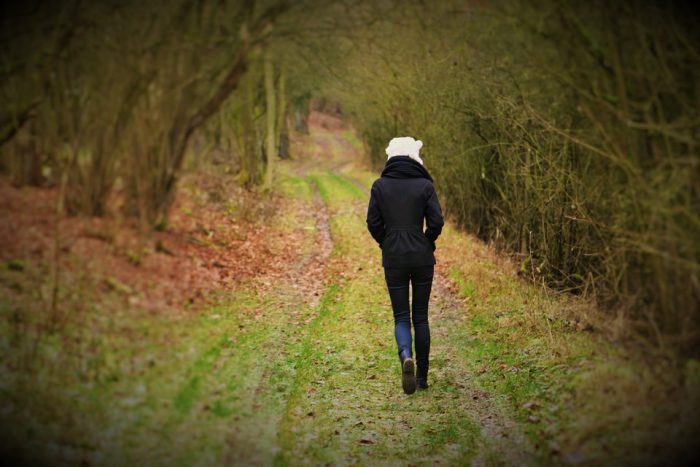Walking meditation has origins in Buddhism and can be used as part of a mindfulness practice.
The technique has many possible benefits and may help you to feel more grounded, balanced, and serene. It also helps you to develop a different awareness of your surroundings, body, and thoughts.

What is a walking meditation practice?
Typically, during walking meditation you walk in a circle, back and forth in a straight line or in a labyrinth. It’s also possible to do a walking meditation over a longer distance.
The pace is slow and can vary depending on the specific technique. Often, practitioners do a walking meditation session between seated meditations.
Examples of walking meditations include:
- kinhin
- theravada
- vipassana
Techniques can be as detailed as breaking down each step into six parts or simply strolling mindfully in a space. You may incorporate your breath or a mantra.
Boost blood flow
Walking meditation is often used by people who sit for long periods. The walking practice helps to get the blood flowing, especially to the legs. It helps to alleviate feelings of sluggishness or stagnancy.
Mindful walking is also a great way to boost blood circulation and raise your energy levels if you’re doing seated work for extended periods.
Improve digestion
Walking after eating is a fantastic way to boost digestion, especially if you’re feeling heavy or full.
Movement helps food to move through your digestive tract and may also prevent constipation.
Reduce anxiety
If you’re looking to lower your stress levels, you may find it useful to do a seated meditation practice before or after you work out.
A 2017 study on young adults showed that walking is more effective in reducing symptoms of anxiety when combined with meditation.
The participants who showed the most significant changes in their anxiety levels either meditated, meditated before walking, or walked before meditating. The control group, along with people who only walked, didn’t show as great of improvements. Each meditation or walking session was 10 minutes.
Improves blood sugar levels and circulation
A small 2016 study concluded that a Buddhist-based walking meditation practice had a positive effect on blood sugar levels and circulation in people with type 2 diabetes.
People practiced mindful or traditional walking for 30 minutes, 3 times a week for 12 weeks. The group that did the Buddhist walking practice showed more improvement than the group who did traditional walking.
Alleviates depression
It’s important to stay active, especially as you age. Regular exercise helps to boost fitness levels and improve mood both of which are at risk of declining in older adults.
According to a small 2014 study, older people had fewer symptoms of depression after practicing Buddhist walking meditations 3 times a week for 12 weeks. They also improved their blood pressure and functional fitness levels, which can be achieved through walking.
Improves well-being
When possible, take a walk in nature, like a park, garden, or place with trees, which may enhance your overall feelings of well-being and help you feel more balanced.
The practice of forest bathing is popular in Japan for its pros like relaxation and enhanced brain activity.
Improves sleep quality
To get the benefits of exercise, it’s not necessary to do an intense workout. Walking may help to improve flexibility and reduce muscle tension so you feel better physically.
Plus, you’ll be more likely to reduce feelings of stress and anxiety, especially if you walk in the morning. All of these benefits can leave you with a calm, clear mind so you’re ready to drift off and sleep deeply each night.
Makes exercise enjoyable
Incorporating a mindfulness aspect into your fitness routine may make exercise more enjoyable.

People who listened to a mindfulness recording while doing a 10-minute walk on a treadmill found the activity more enjoyable. They were directed to notice their physical sensations in a nonjudgmental way.
Inspires creativity
Practicing mindfulness may bring you more clarity and focus to your thought patterns, which in turn can stimulate creativity.
In the meantime, you can explore how a mindfulness practice enhances your problem-solving skills or the cultivation of new ideas.




![The Top & Most Popular Seafood Bucket Restaurants in Dubai for you [Never Miss]](https://uae24x7.com/wp-content/uploads/2020/09/8-seafood-in-a-bucket-scaled-e1600739237403.jpg)
![Procedures for Renewing the Driving License in Abu Dhabi [3 Simple Steps]](https://uae24x7.com/wp-content/uploads/2020/07/Capture-9-e1595666454466.jpg)





